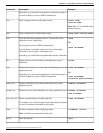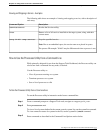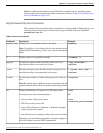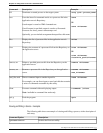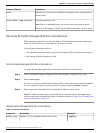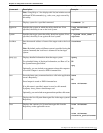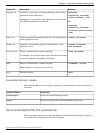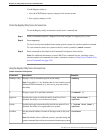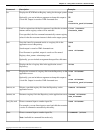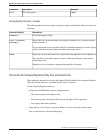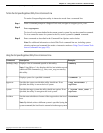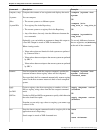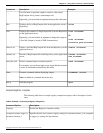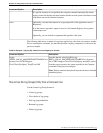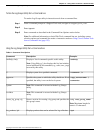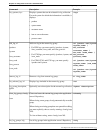
Example:Description:Command:
>listDisplays the ICM Windows Registry setting for the target system.list
OROptionally, you can include an argument to dump this output to
a local file. Output is stored as XML-formatted text.
>list
<localfile_path\filename>
>/list /instance
<instance_name>
Used in conjunction with the list command, specifies the customer
instance whose registry values will be returned.
instance
If not specified, the List command automatically returns registry
values for the first customer instance it finds on the target system.
>saveSaves the latest list command results to a registry file in the
application server's Repository.
save
OR
Saved output is stored as XML-formatted text.
>save <filename>
If no file name is specified, output is saved to a file named:
Registry <host_name> <timestamp>.xml.
Optionally, you can include an argument that specifies a file name.
>filesDisplays the list of registry files in the application server's
Repository.
files
>view <filename>Displays the contents of a registry file from the Repository on the
application server.
view
OR
Optionally, you can include an argument to dump this output to
a local file. Output is stored as XML-formatted text.
>view <filename>
<localfile_path\filename>
>remove <filename>Deletes a specified registry file from the Repository on the
application server.
remove, rm
>rename <filename>
<new_filename>
Renames a registry file in the Repository on the application server.rename, ren
>read <filename>Directs command input to another input file.read_file, read
For example, you can direct input to run a batch file that contains
a series of commands executable by this utility.
><command> /silentDirects command input to another input file.silent
Note: Available in command-line mode only.
Cisco Support Tools User Guide for Cisco Unified Software Release 2.1(1)
138
Chapter 12: - Using Cisco Tools from a Command Line
How to Use the Registry Utility from a Command Line



